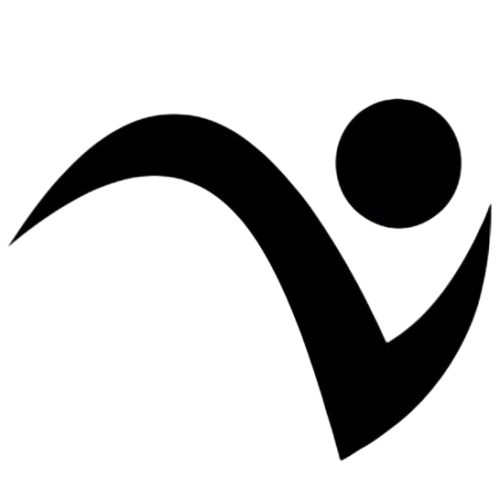For any trained runner or endurance athlete, the fear of losing fitness during a break—whether due to injury, illness, travel, or burnout—is very real. But how fast does fitness actually fade? And what parts of your hard-earned endurance go first?
Let’s break down what happens to your body when you stop training, how quickly aerobic fitness declines, and what science says you can do to slow it down.
🧬 What Is Aerobic Fitness, Really?
Aerobic fitness refers to your body’s ability to take in, transport, and use oxygen during sustained physical activity. The gold-standard measure of aerobic capacity is VO₂ max—the maximum amount of oxygen your body can use during intense exercise.
While VO₂ max is crucial, endurance performance is also built on many other adaptations:
- Increased blood plasma volume
- Greater stroke volume and cardiac output
- Higher capillary density in muscles
- Enhanced mitochondrial function
- Improved fat metabolism and lactate clearance
These adaptations take weeks and months to build. But how long do they stick around when you stop training?
⏳ Timeline: How Fast Do You Lose Aerobic Fitness?
1–2 Weeks: Early Changes Begin
Even a short break leads to measurable changes:
- VO₂ max can drop by 4–10%, even with just 12 days of inactivity.
- ✅ Coyle et al. (1984) observed a 7% decrease in VO₂ max in trained cyclists after 12 days off.
- Blood plasma volume decreases rapidly—by up to 12%, leading to lower stroke volume and increased heart rate at submaximal efforts.
- ✅ Convertino (1997) confirmed these cardiovascular changes within just a few days.
2–4 Weeks: The Decline Accelerates
- VO₂ max may decline by 10–15%.
- Muscular oxidative enzymes like citrate synthase and cytochrome c oxidase start to decrease.
- ✅ Maldonado-Martin et al. (2004) found reduced mitochondrial enzyme activity after 21 days of detraining.
- Endurance performance declines faster than VO₂ max due to loss of lactate threshold efficiency and economy of movement.
4–8 Weeks: More Significant Regression
- VO₂ max loss can reach 15–20% or more, especially in highly trained athletes.
- Capillary density and mitochondrial volume drop significantly—reducing the muscles’ oxygen efficiency.
- ✅ Hoppeler et al. (1985) reported a 25–45% reduction in mitochondrial content after 6–8 weeks of detraining.
- Stroke volume and maximal cardiac output decline further, reducing aerobic endurance capacity.
- ✅ Coyle et al. (1986) confirmed cardiac performance remained depressed after 84 days of no training.
🧠 Why Trained Athletes Lose Fitness Faster (But Recover Better)
Trained athletes often lose aerobic capacity faster than beginners due to the greater baseline. But here’s the good news:
➡️ You retain some adaptations longer, like motor skills, structural changes in the heart and muscles, and muscle memory.
➡️ You also rebuild fitness faster once training resumes—thanks to previous adaptation history.
So while your VO₂ max may decline, your return to peak shape is often quicker than someone starting from scratch.
🛡️ How to Slow Fitness Loss During a Break
If you're forced to take time off, the right strategy can help preserve your gains:
✅ Reduce, Don't Eliminate
- Training just 1–2 times per week can maintain VO₂ max for several weeks.
- Mujika et al. (1996) showed that reducing training frequency but maintaining intensity can preserve aerobic capacity.
✅ Cross-Train When Possible
- Swimming, cycling, elliptical, or brisk walking can help maintain cardiovascular conditioning if you can’t run.
✅ Prioritize Strength and Mobility
- Resistance training helps maintain muscle mass and neuromuscular coordination.
✅ Fuel and Recover Well
- Nutrition, hydration, and sleep remain critical—especially when your body is in recovery mode.
📌 Key Takeaways
- VO₂ max begins to drop within 1–2 weeks of detraining.
- You can lose up to 20% of aerobic capacity in 4–8 weeks, depending on prior fitness level.
- Trained athletes lose fitness faster but can regain it more efficiently.
- Even minimal activity can slow down fitness loss and preserve endurance gains.
💬 Final Thoughts
Taking a break doesn’t mean starting over. Your body is incredibly adaptable, and fitness isn’t lost overnight. By staying active in small ways and returning to training with a smart, structured plan, you’ll bounce back stronger than you think.
So if you’re sidelined or planning a break—don’t panic. Focus on what you can do, trust the process, and remember: a few steps back now doesn’t stop you from surging forward later.
📚 References
- Coyle, E.F., et al. (1984). Detraining and endurance exercise performance. Medicine & Science in Sports & Exercise, 16(5), 489–493.
- Convertino, V.A. (1997). Cardiovascular consequences of bed rest: Effect on maximal oxygen uptake. Medicine & Science in Sports & Exercise, 29(2), 191–196.
- Mujika, I., & Padilla, S. (2000a). Detraining: Loss of training-induced physiological and performance adaptations. Sports Medicine, 30(2), 79–87.
- Maldonado-Martin, S., et al. (2004). Muscle oxidative capacity and VO2max after short-term detraining in endurance athletes. Journal of Applied Physiology, 96(5), 1495–1500.
- Hoppeler, H., et al. (1985). Muscle structure and oxygen uptake in trained athletes after detraining. European Journal of Applied Physiology, 53(2), 209–218.
- Mujika, I., et al. (1996). Maintaining VO2max with training during detraining. International Journal of Sports Medicine, 17(1), 25–29.

